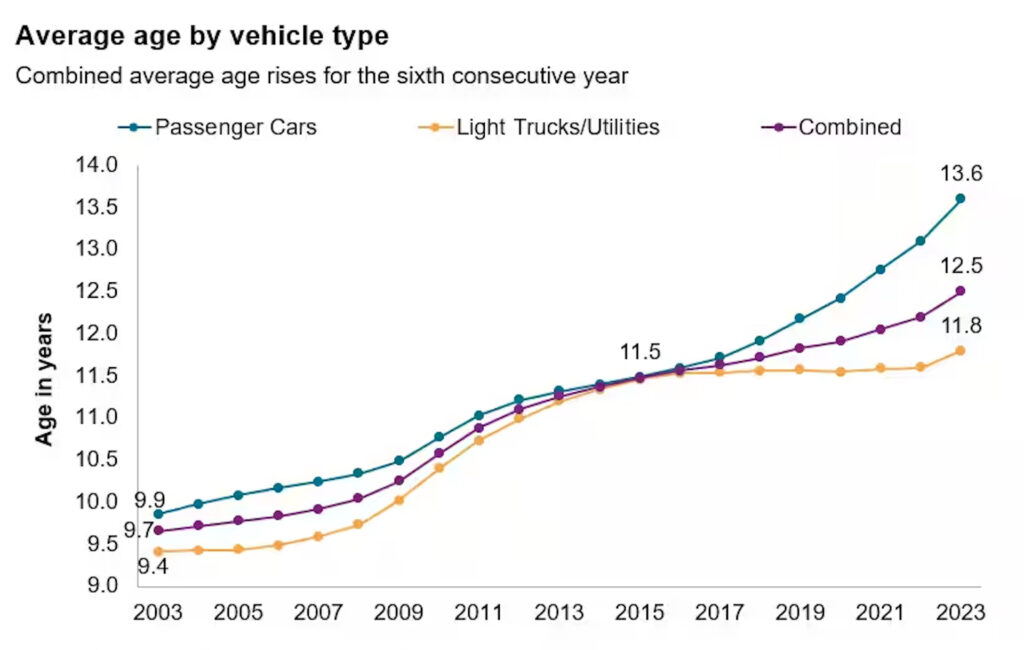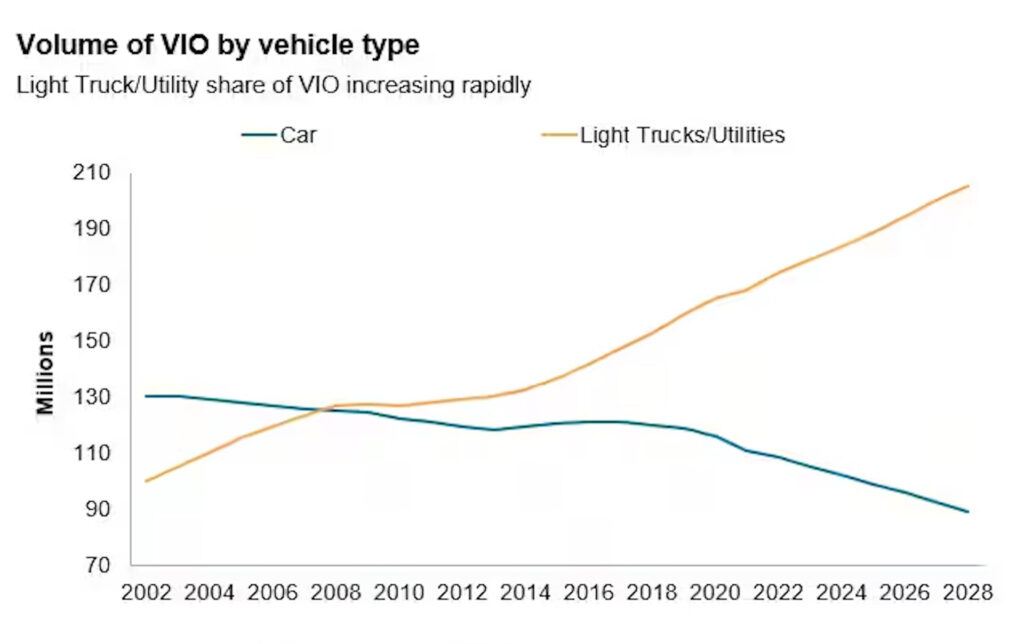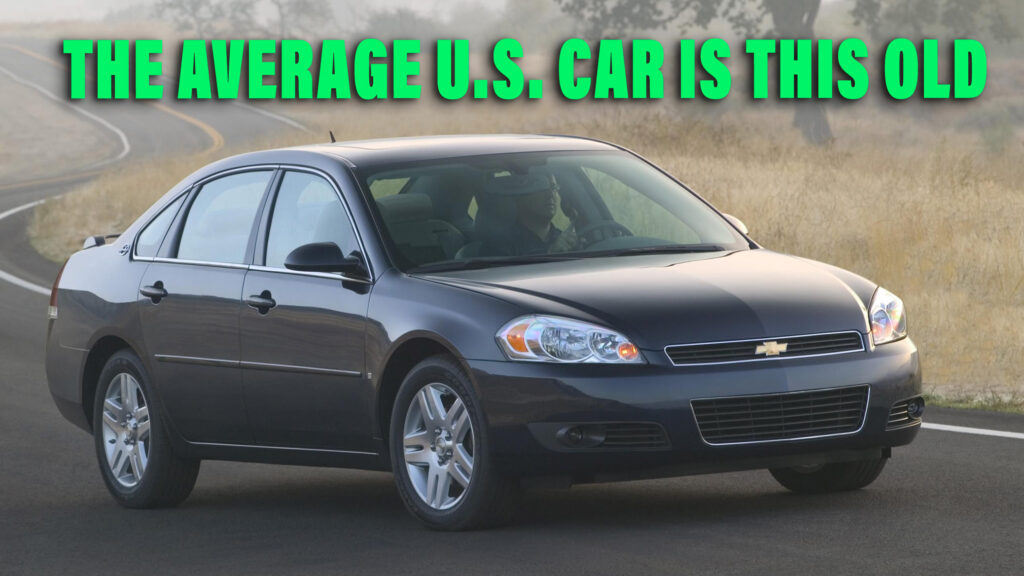California’s 2035 ban on combustion engines might be picked up by other states, but if the results of a new study are anything to go by, millions of Americans won’t feel the impact until the middle of the century.
Data shows that the average age of the 284 million vehicles on U.S. roads has hit a record high of 12.5 years. The rise is the sixth consecutive annual increase and the three extra months added between 2021 and 2022 represents the biggest annual jump since the 2008-09 recession.
That 12.5-year figure is high, but it would be higher still if not held down by the average age of trucks and SUVs, which is 11.8 years. Focus purely on cars and the average age stands at 13.6 years. If things carry on at this rate we’ll all be driving classics by the end of the decade.
And while we’re talking cars, it’s interesting to note that the rise in the popularity of trucks and SUVs means the number of passenger cars on American roads will soon fall below 100 million for the first time since 1978.
Related: Trio Of Brand-New Tesla Roadsters Found Abandoned In A Shipping Container After 10 Years

The study comes from S&P Global Mobility, which says supply constraints in the new car market, followed by rising interests rates and inflation cooling demand for new cars, are largely responsible for the increase in average vehicle ages. It cites as evidence the retail and fleet sales totals for new vehicles, which dropped by 8 percent to 13.9 million units in 2022 and are at their lowest level in a decade.
But while none of this sounds good for new car salesman, it’s great for the aftermarket service industry. S&P estimates that revenue in the service sector grew by 8.5 percent in 2022 to $365.5 billion. Previously, the sweet spot for aftermarket repair was thought to be 6-11 years, but the aging auto population has pushed that up to 12.5 years. The report says there are now almost 122 million vehicles over 12 years old on American roads.





